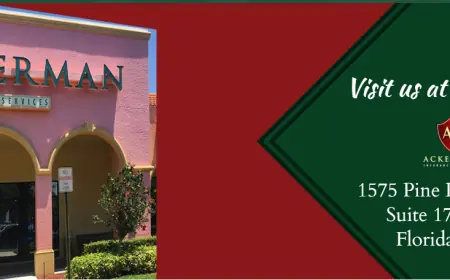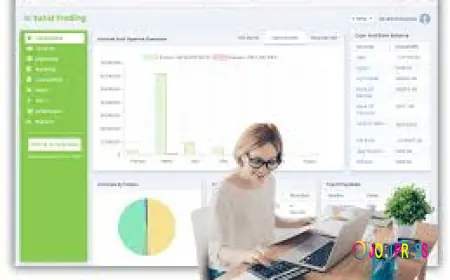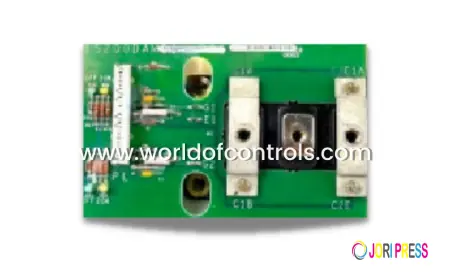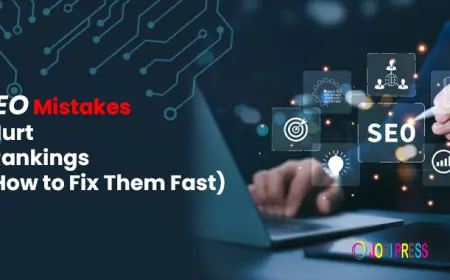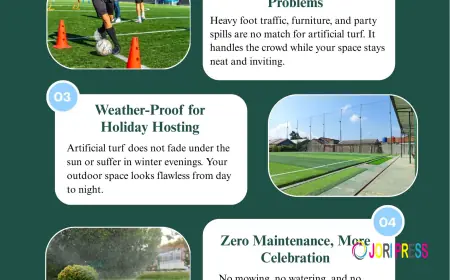HRMS vs Recruitment Management vs Job Board Software: Which One is Best?
Compare HRMS, Recruitment Management, and Job Board Software to find the best HR solution. Streamline hiring, employee management, and talent acquisition.
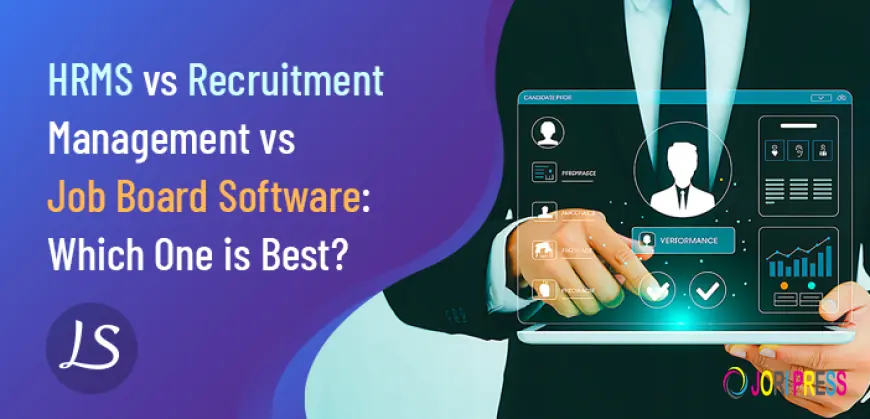
Introduction
Imagine spending thousands of hours managing employee data, payroll, and recruitment tasks — only to realise that your HR processes are fragmented, slow, and holding back business growth. Many companies face this challenge daily without realising the hidden cost of inefficiency.
With the rise of digital HR solutions, three tools have emerged as the most impactful solutions: HRMS (Human Resource Management System), Recruitment Management Software (RMS), and Job Board Software. Each of these tools addresses a different part of the HR puzzle — employee management, recruitment workflows, and candidate attraction. But knowing which one fits your business, or how they can work together, is the real game-changer.
So how do you decide which one is right for your business? And more importantly, is there a way to harness these systems together for maximum impact?
In this guide, we will unravel the nuances of HRMS, Job Board Software, and RMS, explore their core features, and reveal how integrating them — along with an applicant tracking system (ATS) — can transform your HR operations from reactive to strategic. By the end, you’ll know exactly which solution aligns with your organisation’s goals and how to implement it for measurable results.
What is HRMS software?
HRMS Software (Human Resource Management System Software) is a comprehensive digital solution that helps organisations manage their entire employee lifecycle — from hiring and onboarding to payroll, benefits, performance management, and more. Unlike traditional manual HR processes, HRMS software centralises all HR functions in one platform, saving time, reducing errors, and enabling data-driven decision-making.
By automating administrative tasks, HRMS software allows HR teams to focus on strategic initiatives such as talent development, workforce planning, and employee engagement, while also ensuring compliance with labour laws and company policies.
Core Features of HRMS
- Employee Data Management: Centralized database for storing all employee information.
- Payroll & Benefits Administration: Automates salary calculations, tax compliance, and benefit management.
- Performance Tracking: Facilitates performance appraisals, goal-setting, and feedback.
- Attendance & Leave Management: Tracks time, attendance, and leave requests.
Who Should Use HRMS Software?
HRMS software is perfect for companies that want to simplify employee management and free their HR teams from tedious administrative work. It helps HR professionals focus on strategic initiatives like talent development, workforce planning, and boosting employee engagement. Beyond just saving time, HRMS provides valuable insights that help leaders make smarter, data-driven decisions. Organisations that are growing fast or managing teams across multiple locations will find it especially useful, as it ensures consistency, efficiency, and a smoother experience for both employees and managers.
What is Recruitment Management Software (RMS)?
Recruitment Management Software (RMS) is a specialized digital solution designed to streamline and automate the recruitment process. From posting job openings to onboarding new hires, RMS helps HR teams attract, track, and hire the right talent faster and more efficiently.
In today’s competitive talent landscape, companies cannot rely on manual processes or spreadsheets to manage applicants. RMS provides a centralized platform that ensures every step of recruitment — from sourcing candidates to managing interviews — is organised, transparent, and data-driven.
Modern RMS solutions often integrate with HRMS and Applicant Tracking Systems (ATS), enabling a seamless transition from recruitment to employee management.
Core Features of RMS
- Job Posting & Candidate Sourcing: Post jobs across multiple platforms and attract top talent.
- Applicant Tracking (ATS): Monitor candidates through every stage of the hiring pipeline.
- Interview Scheduling & Collaboration: Streamlines interview planning and team coordination.
- Recruitment Performance Dashboard: Monitor hiring efficiency, open roles, and team productivity in real time.
Who Should Use Recruitment Management Software?
Recruitment Management Software is perfect for HR teams focused on hiring faster, smarter, and more effectively. It benefits organizations that handle a large number of applicants, are scaling quickly, or want to enhance collaboration between recruiters and hiring managers. By automating repetitive tasks and providing actionable insights, RMS helps teams find the right candidates without delays or bottlenecks.
What is Job Board Software?
Job Board Software is a tool that helps companies create their own job portal or career site where they can post openings and connect directly with job seekers. Unlike Recruitment Management Software (RMS), which mainly handles candidates once they’ve applied, Job Board Software focuses on the first stage of hiring — attracting the right people to apply in the first place.
Instead of relying only on platforms like Indeed or LinkedIn, businesses can use Job Board Software to build a branded job board that highlights their open roles, company culture, and benefits. This not only helps reach more candidates but also makes the company stand out in a competitive job market.
Many modern Job Board Software solutions can also be connected with RMS or HRMS, so once a candidate applies, their details can easily flow into the recruitment and employee management systems.
Core Features of Job Board Software
- Custom Job Listings: Post openings directly to your branded job portal.
- Search & Filter Tools: Helps candidates find roles that match their skills.
- Employer Branding Options: Showcase company culture, values, and benefits.
- Application Management: Direct applications to recruiters or integrate with RMS/ATS.
Who Should Use Job Board Software?
Job Board Software is best for companies that want to attract talent directly or agencies creating niche job portals. It is also a great choice for businesses looking to establish a centralized career hub instead of relying only on third-party platforms like Indeed or LinkedIn. Startups and growing businesses can also benefit by building their employer brand early, while larger organisations can use it to maintain a consistent hiring experience across departments.
When to Choose HRMS vs Recruitment Software vs Job Board
HRMS, Recruitment Management Software, and Job Board Software are all powerful in their own way, but their strengths lie in different stages of the HR and recruitment journey. Choosing the right one depends on your company’s goals, growth stage, and immediate challenges.
Choose HRMS Software if:
- Your focus goes beyond recruitment. HRMS is built to handle the entire employee lifecycle — from hiring and onboarding to payroll, benefits, training, and performance management.
- You want centralized HR processes. If your HR team spends a lot of time juggling spreadsheets, emails, and disconnected tools, HRMS offers a single source of truth for all employee data.
- Compliance and accuracy are a priority. For companies that need to manage payroll, taxation, leave policies, or labor laws, HRMS helps ensure accuracy and reduces legal risks.
- You want to improve employee engagement. With self-service portals, performance tracking, and learning modules, HRMS helps build a better employee experience while reducing HR’s workload.
Best suited for businesses that want to strengthen their HR foundation, optimize daily operations, and improve overall workforce management.
Choose Recruitment Management Software (RMS) if:
- Your company is scaling hiring quickly. Fast-growing businesses need RMS to manage large volumes of applications without losing top talent in the process.
- Candidate tracking is a challenge. If resumes are getting lost in email chains or spreadsheets, RMS ensures organized candidate pipelines and smoother collaboration between recruiters and managers.
- You want to speed up hiring decisions. RMS automates repetitive tasks like job postings, interview scheduling, and candidate communication, so HR teams can focus on choosing the right candidates.
- Recruitment insights matter. With built-in analytics, RMS provides clear visibility into hiring metrics like time-to-hire, cost-per-hire, and source effectiveness, helping optimize recruitment strategies.
Best suited for organizations where talent acquisition is the top priority and competition for skilled candidates is high.
Choose Job Board Software if:
- You want to attract candidates directly. Job Board Software helps companies or agencies build branded career portals and attract talent without relying only on third-party sites like LinkedIn or Indeed.
- You want to boost employer branding. With custom job listings, branding options, and career pages, businesses can showcase culture, values, and perks to engage candidates.
- You need a centralized career hub. Instead of scattering listings across different platforms, Job Board Software brings all opportunities under one roof.
- You’re building niche hiring platforms. Recruitment agencies, startups, or businesses targeting specific industries can use it to launch niche job portals and create tailored candidate experiences.
Best suited for businesses or agencies that want to increase visibility, attract talent directly, and control their employer brand presence online.
Pro Tip: Why Not Combine All Three?
Each tool has its unique role, but together, they can transform HR operations into a complete, end-to-end ecosystem:
- Job Board Software brings in top talent by boosting visibility and employer branding.
- Recruitment Management Software (RMS) manages candidates once they enter the hiring pipeline — from application to offer.
- HRMS Software takes over post-hire, handling payroll, onboarding, compliance, and employee engagement.
By integrating these systems, companies save time, reduce data entry errors, improve collaboration, and create a seamless experience for both candidates and employees.
Benefits of Integrating Job Board Software with HRMS and RMS
Integrating Job Board Software with your HRMS (Human Resource Management System) and RMS (Recruitment Management Software) creates a complete HR ecosystem that streamlines recruitment, onboarding, and employee management. This unified approach not only saves time but also improves efficiency, accuracy, and the overall candidate and employee experience.
1. Direct Access to Top Talent
Job Board Software allows your company to attract candidates directly through a branded portal, rather than relying solely on third-party platforms like Indeed or LinkedIn. When connected with RMS, these applications automatically enter your recruitment pipeline, allowing HR teams to quickly evaluate and shortlist candidates without manual handling.
2. Streamlined Recruitment Process
Integration ensures that all applications submitted via your job board flow seamlessly into RMS and HRMS. This eliminates duplicate data entry, reduces errors, and ensures candidates are tracked through every stage of recruitment — from application to interview to onboarding.
3. Enhanced Employer Branding
A branded job board showcases your company culture, mission, and benefits, helping attract the right talent. By linking this to RMS and HRMS, candidates experience a consistent and professional brand journey from the moment they apply to their first day as an employee, building trust and engagement.
4. Centralized Data & Analytics
All candidate and employee data is consolidated in one system. HR leaders can monitor application sources, hiring timelines, time-to-hire, retention rates, and employee performance in real time. This data-driven approach enables smarter decisions, identifies recruitment bottlenecks, and optimizes workforce planning.
5. Faster Onboarding & Reduced Administrative Work
Once candidates are selected, their profiles, documents, and contracts automatically transfer to HRMS. This automation reduces manual workload, speeds up onboarding, and ensures new hires are set up for payroll, benefits, and training immediately. HR teams can focus on strategic initiatives rather than paperwork.
6. Improved Candidate & Employee Experience
Integration creates a seamless journey for both candidates and employees:
- Candidates benefit from a smooth application and hiring process, with timely updates and a professional experience that strengthens your employer brand.
- Employees enjoy faster onboarding, immediate access to internal resources, and accurate payroll and benefits management.
7. Scalability for Growing Businesses
As your organization expands, handling high volumes of applications and onboarding new employees can become challenging. An integrated system scales effortlessly, supporting increased recruitment activity and employee management without creating operational bottlenecks.
8. Strategic HR Insights
With all three systems working together, leaders gain a holistic view of recruitment and HR operations. You can analyze trends, optimize hiring sources, identify top-performing recruitment channels, and make informed decisions to reduce turnover, improve retention, and build a stronger workforce.
By integrating Job Board Software with RMS and HRMS, businesses transform recruitment and HR from reactive, manual processes into strategic, automated workflows that drive efficiency, engagement, and growth.
Read this complete guide here: www.logicspice.com/blog/hrms-vs-recruitment-management-vs-job-board-software
What's Your Reaction?
 Like
0
Like
0
 Dislike
0
Dislike
0
 Love
0
Love
0
 Funny
0
Funny
0
 Angry
0
Angry
0
 Sad
0
Sad
0
 Wow
0
Wow
0
